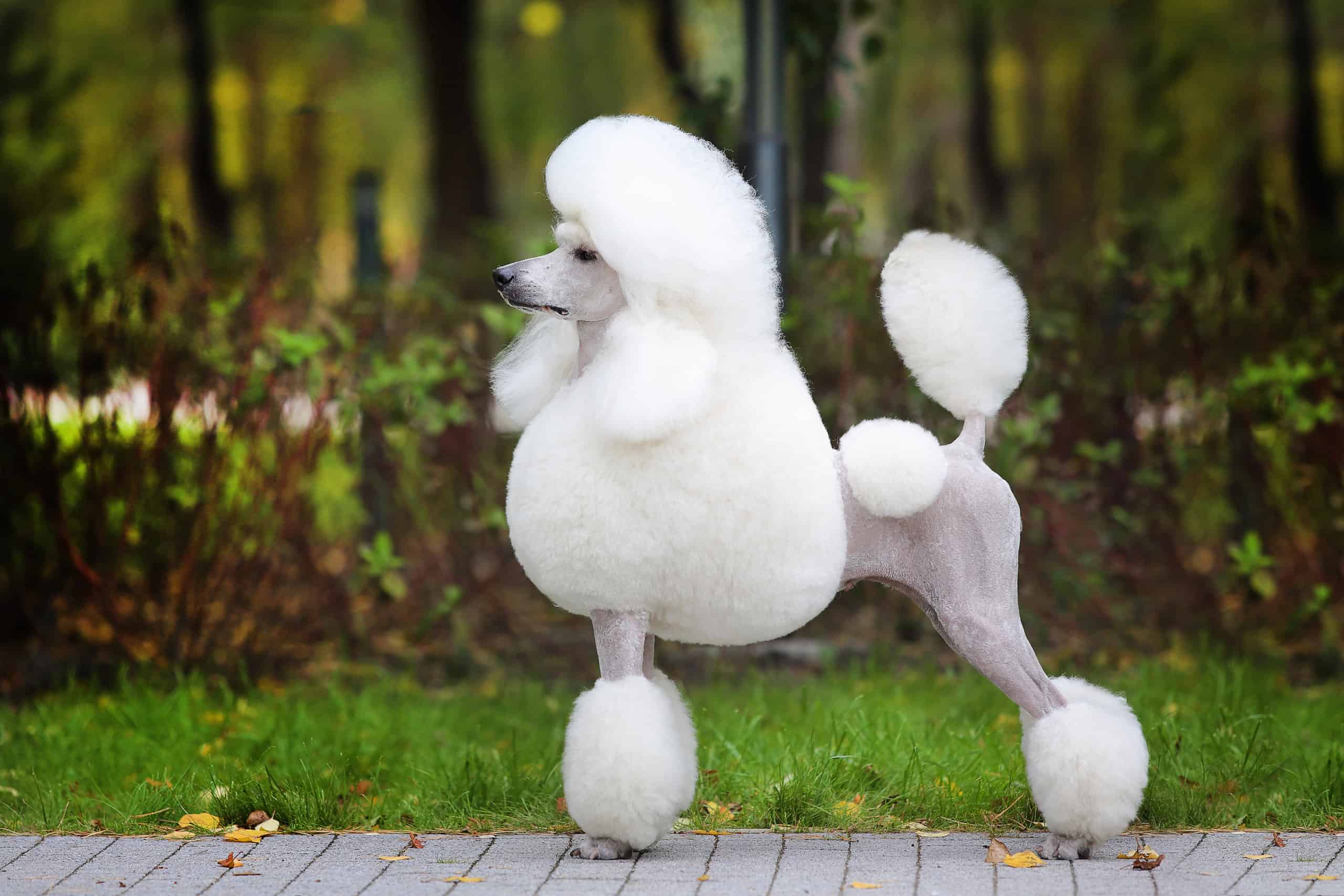Home>Health and Wellness>The Shocking Reason Why People Remove A Corgi’s Tail!


Health and Wellness
The Shocking Reason Why People Remove A Corgi’s Tail!
Published: January 24, 2024
Discover the surprising truth behind the removal of a Corgi's tail and its impact on their health and wellness. Learn why this practice is controversial and its potential effects on your furry friend.
(Many of the links in this article redirect to a specific reviewed product. Your purchase of these products through affiliate links helps to generate commission for Noodls.com, at no extra cost. Learn more)
Table of Contents
Introduction
Corgis are beloved for their adorable appearance, playful nature, and unwavering loyalty. These charming dogs have captured the hearts of many, but there's a controversial practice associated with them that has sparked debates and concerns among animal lovers: tail docking. This procedure involves the removal of a portion of a Corgi's tail, and its history and implications are both fascinating and thought-provoking.
Tail docking has been a longstanding tradition linked to various dog breeds, including Corgis. The reasons behind this practice are multifaceted, ranging from historical working purposes to modern-day aesthetics. However, the ethical considerations and impact on the dogs themselves have led to passionate discussions and calls for change.
As we delve into the history of Corgi tail docking, explore the controversies surrounding this practice, and consider its impact on these endearing canines, it becomes evident that there's much more to this topic than meets the eye. Furthermore, by examining the alternatives to tail docking, we can gain insight into how the well-being of Corgis can be prioritized while preserving their unique characteristics.
The journey to understanding the shocking reason why people remove a Corgi's tail is not only informative but also sheds light on the evolving perspectives and practices within the realm of pet care and animal welfare.
The History of Corgi Tail Docking
The practice of tail docking, the removal of a portion of a dog's tail, has a long and intricate history intertwined with various dog breeds, including the beloved Corgis. The origins of tail docking date back centuries and were initially driven by practical purposes. For Corgis, a breed known for its herding prowess, tail docking was believed to serve functional advantages in their working environment.
Historically, Corgis were employed as herding dogs, particularly in the rugged terrain of Wales. Their duties included herding cattle and other livestock, a task that required agility, speed, and a fearless disposition. Tail docking was thought to prevent injuries to the tail while navigating dense underbrush and confronting formidable livestock. Additionally, it was believed that a shorter tail reduced the risk of it being stepped on or bitten by the animals they herded, thereby safeguarding the Corgis from potential harm.
Beyond the practical considerations, the historical context of tail docking is also linked to cultural and societal norms. In the past, certain dog breeds, including Corgis, were selectively bred and tailored to meet specific working requirements. Tail docking was considered a standard practice for these breeds, with its roots deeply embedded in the traditions and expectations of the time.
As the role of Corgis evolved from working dogs to cherished companions, the practice of tail docking persisted, albeit for different reasons. Aesthetics became a significant factor, as the traditional image of a Corgi often included a docked tail. This aesthetic preference was perpetuated through various means, including dog shows, breed standards, and popular media, further cementing the association between Corgis and tail docking.
Over time, societal attitudes towards animal welfare and ethical treatment have shifted, prompting a reevaluation of tail docking practices. The historical significance of tail docking for Corgis underscores the complex interplay between tradition, functionality, and evolving perspectives on responsible pet care.
Understanding the historical underpinnings of Corgi tail docking provides valuable insights into the multifaceted reasons behind this practice and sets the stage for exploring its contemporary implications and potential alternatives.
The Controversy Surrounding Tail Docking
The practice of tail docking in Corgis and other dog breeds has ignited a contentious debate within the realm of animal welfare and responsible pet ownership. At the heart of this controversy are ethical considerations, the well-being of the dogs, and the evolving perceptions of cosmetic alterations for non-therapeutic purposes.
One of the central points of contention revolves around the ethical implications of tail docking. Critics argue that this practice infringes upon the natural integrity of the dog's body, altering its appearance for human preferences without providing any tangible benefit to the animal. This raises profound questions about the autonomy and well-being of the Corgis, prompting a critical examination of the justifications for tail docking in modern society.
Furthermore, the controversy surrounding tail docking extends to the potential physical and psychological impact on the dogs. Opponents of the practice assert that the removal of a portion of the tail can cause pain and distress to the animals, particularly if the procedure is not performed under appropriate anesthesia and veterinary care. Additionally, concerns have been raised regarding the role of the tail in canine communication and balance, suggesting that tail docking may disrupt these essential functions, potentially affecting the overall welfare of the Corgis.
The ethical and welfare-related considerations are further compounded by the shifting societal attitudes towards cosmetic alterations for pets. As awareness of animal rights and compassionate stewardship continues to grow, there is a heightened emphasis on respecting the natural attributes of animals and refraining from unnecessary interventions that solely serve human preferences. This evolving perspective underscores the significance of the controversy surrounding tail docking and its resonance with broader discussions on ethical treatment of animals.
Amidst the controversy, there are also practical and regulatory dimensions to consider. In some regions, the practice of tail docking has been subjected to legal restrictions or outright bans, reflecting the increasing recognition of the ethical and welfare concerns associated with this procedure. These legislative measures reflect a growing consensus on the need to prioritize the well-being of animals and align pet care practices with ethical principles.
The multifaceted nature of the controversy surrounding tail docking underscores the complex interplay between tradition, ethics, animal welfare, and societal attitudes. As perspectives continue to evolve, the discourse surrounding this practice remains a focal point in the ongoing dialogue on responsible pet ownership and the ethical treatment of animals.
The Impact on Corgis
The practice of tail docking has a profound impact on Corgis, influencing their physical well-being, communication abilities, and overall quality of life. From a physiological standpoint, the removal of a portion of the tail can result in both immediate and long-term implications for these endearing canines. The procedure itself, if not performed under appropriate veterinary care and anesthesia, can subject the Corgis to pain and distress, potentially compromising their welfare. Moreover, the healing process following tail docking can be discomforting for the dogs, impacting their mobility and comfort.
Beyond the immediate physical effects, tail docking can also have lasting consequences on the Corgis' ability to communicate and interact with their environment. A dog's tail serves as a crucial means of expression, conveying a range of emotions and intentions through its movements. For Corgis, renowned for their spirited and expressive nature, the absence of a full tail can impede their natural communication, hindering their capacity to express themselves fully. This can lead to challenges in social interactions with other dogs and humans, potentially affecting their behavioral well-being.
Furthermore, the impact of tail docking extends to the Corgis' balance and coordination. A dog's tail plays a pivotal role in maintaining stability and equilibrium, especially during movement and navigation. For Corgis, known for their agility and nimbleness, the alteration of their natural tail length can disrupt these essential functions, potentially affecting their overall physical prowess and comfort.
In addition to the immediate and physical implications, the practice of tail docking can also have psychological effects on Corgis. The experience of undergoing a surgical procedure and the subsequent adjustments to their natural body state can contribute to stress and anxiety in these sensitive and perceptive animals. This psychological impact underscores the broader considerations of the practice, emphasizing the importance of prioritizing the emotional well-being of Corgis in addition to their physical health.
The cumulative impact of tail docking on Corgis underscores the far-reaching consequences of this practice, prompting a critical examination of its ethical and welfare-related dimensions. As advocates for responsible pet care and compassionate stewardship, it is essential to consider the holistic impact of tail docking on Corgis and strive towards practices that prioritize their well-being and natural attributes.
Alternatives to Tail Docking
In response to the ethical and welfare-related concerns surrounding tail docking, there has been a growing emphasis on exploring alternative approaches that prioritize the well-being and natural attributes of Corgis. These alternatives seek to address the practical considerations associated with tail docking while preserving the integrity and functionality of the dogs' tails.
One prominent alternative to tail docking is the implementation of breed-specific standards and guidelines that accommodate the natural tail length of Corgis. By advocating for breed standards that recognize and embrace the full tail of Corgis, it is possible to celebrate their unique characteristics without resorting to cosmetic alterations. This approach not only respects the natural attributes of the dogs but also aligns with the evolving societal attitudes towards responsible pet care and animal welfare.
Another alternative involves promoting education and awareness among breeders, veterinarians, and Corgi enthusiasts regarding the implications of tail docking and the importance of preserving the natural integrity of the dogs' tails. By fostering a deeper understanding of the ethical considerations and welfare-related implications associated with tail docking, it is possible to encourage a shift towards more compassionate and respectful practices that prioritize the well-being of the Corgis.
Additionally, advancements in behavioral and training techniques offer alternative avenues for addressing concerns related to tail injuries and communication abilities without resorting to tail docking. By providing enriching environments, appropriate socialization, and positive reinforcement training, it is possible to mitigate the risk of tail injuries while promoting healthy and expressive communication among Corgis. These alternative approaches not only safeguard the dogs from potential harm but also enhance their overall well-being and quality of life.
Furthermore, ongoing research and innovation in veterinary care and canine welfare present opportunities to develop non-invasive interventions and treatments for tail injuries or related conditions. By leveraging medical advancements and holistic approaches, it is feasible to address specific concerns without necessitating the removal of a portion of the Corgis' tails, thereby prioritizing their natural attributes and welfare.
Embracing these alternatives to tail docking reflects a commitment to responsible pet ownership and compassionate stewardship, underscoring the significance of prioritizing the well-being and natural characteristics of Corgis. As perspectives continue to evolve, the exploration and implementation of alternative approaches serve as a testament to the enduring dedication towards fostering a harmonious and respectful relationship with these beloved canine companions.
Conclusion
In conclusion, the practice of tail docking in Corgis encapsulates a complex tapestry of historical, ethical, and welfare-related considerations. The historical roots of tail docking, stemming from practical working purposes and cultural traditions, have intersected with evolving societal attitudes towards responsible pet care and animal welfare. This intersection has given rise to a profound controversy surrounding the practice, prompting critical reflections on its ethical implications and impact on the well-being of these endearing canines.
As we navigate through the multifaceted dimensions of tail docking, it becomes evident that the shocking reason behind this practice is deeply entrenched in historical contexts and aesthetic preferences, while also eliciting passionate debates on the autonomy and welfare of Corgis. The impact of tail docking on these dogs extends beyond the physical alteration of their tails, encompassing implications for their communication abilities, balance, and overall quality of life.
However, amidst the controversies and ethical considerations, there exists a palpable momentum towards exploring alternative approaches that prioritize the well-being and natural attributes of Corgis. These alternatives, ranging from breed-specific standards to advancements in veterinary care and behavioral techniques, underscore a collective commitment to fostering a harmonious and respectful relationship with these beloved canine companions.
The journey to understanding the shocking reason behind the removal of a Corgi's tail has illuminated the intricate interplay between tradition, ethics, and evolving perspectives on responsible pet ownership. It has also underscored the enduring dedication towards advocating for the well-being and natural integrity of Corgis, transcending historical practices to embrace compassionate stewardship in the modern era.
As we chart a path forward, it is imperative to continue the dialogue on responsible pet care, animal welfare, and ethical considerations, ensuring that the well-being of Corgis and other companion animals remains at the forefront of our collective consciousness. By embracing alternative approaches and fostering a deeper understanding of the implications of tail docking, we can strive towards a future where the shocking reason behind removing a Corgi's tail is replaced with a steadfast commitment to their holistic well-being and natural attributes.














